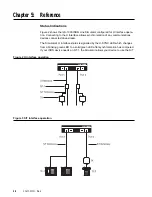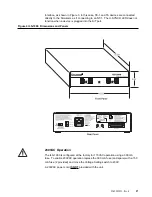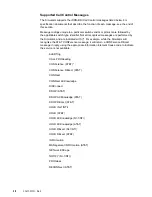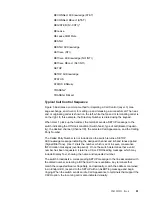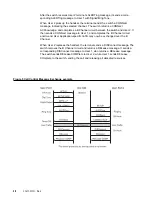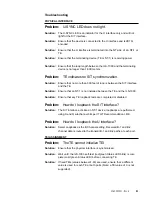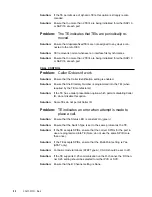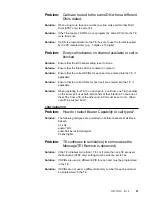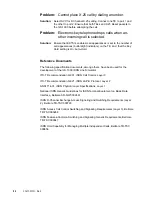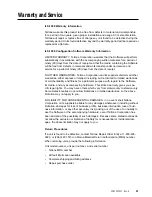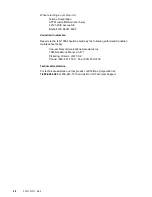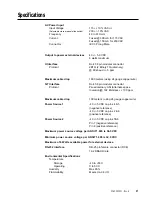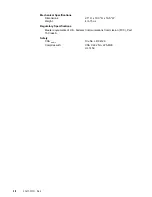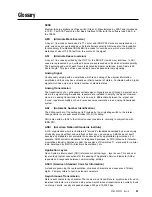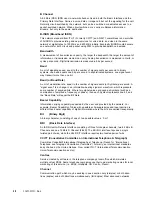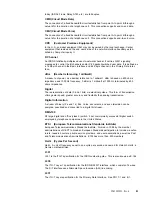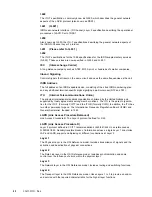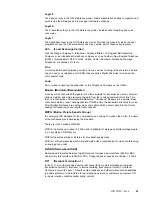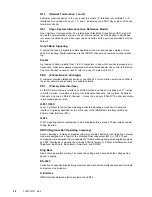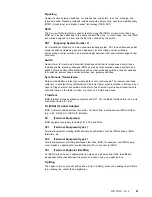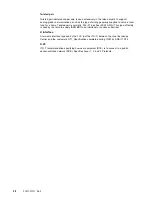
40
40-400-00001, Rev. A
B Channel
A 64 Kb/s (DS0) ISDN user-to-network channel. Used in both the Basic Interface and the
Primary Rate Interface. Carries a voice, data or image call, but not the signaling for the call.
Normally circuit-switched by the network, but can be a switched or dedicated access to a
packet-switched network. When circuit switched, may carry multiplexed information
streams, but only to the same destination.
B-ISDN (Broadband ISDN)
This network standard from ITU-T (Formerly CCITT) an ANSI T1 committees is an evolution
of N-ISDN to provide existing and new services for voice, data, and video in the same
network at digital rates to 150 Mb/s and 600 Mb/s initially. Eventually B-ISDN could become
one network for both circuit and packet using ATM to provide bandwidth on demand.
Bandwidth
A measurement of transmission capacity; the larger the bandwidth, the larger the amount of
information or transmission medium can carry. Analog transmission is measured in Hertz, or
cycles per second. Digital transmission is measured in bits per second.
Baud
A unit of signaling speed, equal to the number of signal events per second. In binary
systems, one baud equals one bit per second. In sophisticated systems, one signal event
may transmit more than one bit.
Baud (or Baud Rate)
A unit of modulation rate, equal to the number of signal events (or Symbols) per second. A
“signal event” is a change in an information-bearing signal or waveform, which represents
some number of encoded bits. Where two signal values are used as Symbols (such as a
combination of amplitude, frequency or phase), then each Symbol represents one bit, and
the “Baud Rate” will equal the Bit Rate.
Bearer Capability
Information carrying capability requested by the user and provided by the network. For
example, Bearer Capability of Voice with possible echo-suppression and loss-insertion is
different than bearer capability of digital information where the bits are carried transparently.
Bit
(Binary Digit)
A binary character, consisting of one of two possible values: 0 or 1.
BRI
(Basic Rate Interface)
An ISDN User-to-Network Interface consisting of three full-duplex channels; two 64 Kb/s B
Channels and one 16 Kb/s D Channel (2B+D). The 2B+D U interface requires a single
twisted pair of wire, while the 2B+D S/T interface requires two twisted pairs of wire.
CCITT (Consultative Committee on International Telephone & Telegraph)
Committee Consaltatif International Telegraphe et Telephone (French for “International
Telephone and Telegraph Consultative Committee”). Formerly, an international standards
body charted by the United Nations. Now called ITU-T (International Telecommunication
Union-Telecommunication sector.)
Centrex
Service created by software in the telephone company’s local office which simulates
multiple virtual PBXs. Some telephone companies use their own marketing names for local
marketing of this service (i.e. ESSX, Intellipath, IIN, Centro, Plexar).
Channel
Communication path which may be sending in one direction only (simplex) or both direc-
tions (duplex) and both directions simultaneously (full duplex). Most advanced networks

